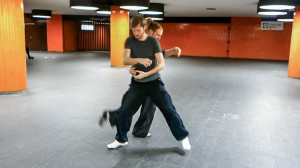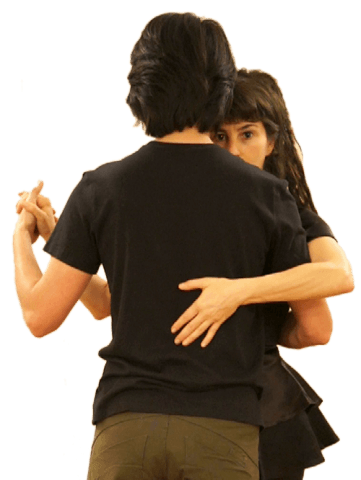I made a series of interviews on behalf of the Berlin edition of Modern Tango World 2015. This is an overview, emphasizing the most interesting things I learned, with links to the original interviews.
“Erfahrungen machen” is a common German phrase, which translates as “making experiences”. The long history of tango here in Berlin has resulted in a maturity and diversity typified in the art of hosting a milonga.
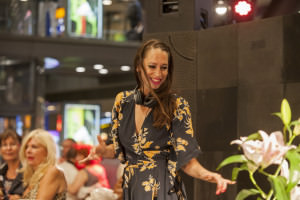
It’s not required that every teacher be also a DJ, milonga host, and performer. For example, Mona Isabelle of Tangoloft tells how she found her role in the tango world. “I competed in a tango championship once, and we made it until the last round, which is very special. As we came back to Berlin I thought maybe I could start a career as a professional dancer. But I felt it’s not me. I feel more comfortable being a DJ and spreading my power to the people and to the milonga, instead of correcting them or presenting myself on stage. The Tangoloft is my stage. Being behind the DJ desk is my stage. I feel much more comfortable there.”
Similarly, Thomas Rieser of Nou Tango explains “I’m not a professional dancer. As a dancer you want to be admired. I’m not like that. I’m not a front stage personality. I like to be in the background. I do a lot from there.”
And yet there is incredible diversity of how they do it: Rieser says “The host has an important role. It’s not just provide the space, invite a DJ, and party yourself. I am the foundation. At a good dinner party, someone is responsible and takes care of the event: Introducing people, noticing people who come alone. If someone is alone too long, I engage them in conversation. I introduce people to each other. If people are not enjoying, I feel uncomfortable. As an organizer you look for something. The music is too loud, or the people are too loud. I will ask the DJ to bring the power down with a quiet tanda.”
But Sven and Pedram, of Tango Kollektiv say almost the opposite. “To make it feel like a party, we party ourselves.”
Michael Rühl of Roter Salon is completely bemused by the events hosted by Tango Kollektiv and others. “I am thinking a milonga needs a beautiful room, with beautiful floor, with good sound equipment, good air, enough seats, and so on. If you look who is having the most success, many people go to milongas which have nothing of this.”
The milonga Tangoloft, owned by Mona Isabelle and Henning Klose, satisfies Michael Rühl’s criteria for a beautiful space, but they play completely different music than he does. “At the moment Berlin has a very traditional tango scene, and Tangoloft is one of the places where we play contemporary and modern tango music, which is my music. I’m really really proud of how big Tangoloft got. In the beginning it was a very small milonga with only 30 or 40 people coming. Now on Sunday we sometimes have 300 people. When people say there is no tango to dance with composed after 1960, that there is no modern tango you can dance tango on, then I feel this is not true because there’s so many people coming at my place coming to hear and dance to the music I am playing, contemporary and modern tango music. I really don’t understand why there are people who are so much against the contemporary tangos. Tango is not dead at all. The tango lives!”
Max Power of Tanguito Potsdam is a young dancer who grew into tango in this diverse context. “I feel comfortable in Berlin because you have so many different opportunities to dance, and if you like you can dance in any way you like. As a leader, as a follower, with man, with woman, with music you like, on the place you like.”
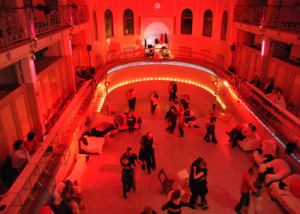
The places include, on a regular basis, open-air milongas, flashmob milongas, elegant dark chandeliered rooms, sex clubs, and river-beaches.
Intermittently, you can dance in a place which will have tango for the first and perhaps only time. This is Solo Una Vez, one of Mona Isabelle’s inventions. “I picked different spots in Berlin where people have never danced tango before. Berlin has a big club culture. I picked clubs like KitKat Club, Badeschiff… And I organized big tango milongas there with 600 or 800 people.”
For seven years Andreas Roccholl has organized an annual milonga in the Hauptbahnhof, Berlin’s Central Train station. “I have learned that I have to use the place as it is, not make it different. I have to work with the power of the place, which is always changing, which is full of technology. I cannot imitate a quiet dark milonga.” For 2016 the festival has been expanded from one day to five days, 23-28 August. There will be a milonga every night with live music and a show. “It would be easy to bring amazing musicians and dancers from other places. I want to encourage people here to cooperate more.” He’ll spend the twelve months leading up to the festival facilitating collaborations between Berlin dancers and musicians.
Mona Isabelle explains that at her events “The concept is always two dance floors, one traditional and one with modern contemporary music and I think this is very special, that these two scenes can live together. That there is a place where everyone can dance on the music they desire, respectfully. I’m proud to be a part of it.”
In a year of dancing, observing, and interviewing people here, I discovered that “making experiences” turns out to have a much deeper meaning.
I read an interview with Thomas Rieser, owner of Nou Tango, currently one of the three biggest schools in town, in which he said he’d never to been to Buenos Aires. This was the first clue that there was something more special about tango here than the luxurious profusion of real candles and diverse locations. In interviewing organizers and dancers across the Berlin scene I learned that while they respect Buenos Aires, they do not defer or give authority.
Thomas explained “The social aspect is part of the tradition. As long as you respect those roots, it’s tango. We are not dancing alone, and not with a group of 3 or more, but in pairs of 2. But we are moving in a larger group, consisting of many pairs of 2…what I think is the essence of tango, the shared heartbeat, in a room with other joined-heartbeats. To me tango is the one dance that is really working this social aspect very deeply. I can feel it when it’s present at a milonga, it radiates positive and loving power.” He went on to say “I don’t need Buenos Aires as part of my work. Tango is rich and deep in Berlin. Nothing is missing emotionally.”
Curious how it was possible that Berlin could escape Buenos Aires’ authority, I asked people specifically about the concept of “authenticity”.
The most direct answer came from DJ Jens Stuller. “Berlin is a city where most people don’t have much money. To live if you don’t have much money, you have to be creative. You wouldn’t go to Buenos Aires tomorrow, or to America or Moscow or where you want to go. So you have to settle in your world in a way. To adapt to what you have. People can do a lot with creativity, spirit.” For him, enjoying the music is the connection to Buenos Aires, and that’s enough. But it’s not necessary “I don’t look for “the real tango”. If people come to my milonga and dance tango on cha-cha-cha it’s ok for me.”
Judith Preuss, owner of Mala Junta tango school, asks “Why should we do things like how we imagine it is in Argentina? What’s the aim of having these strict rules? For me it’s that people fear to move free. They want to have a definition of being right and doing it right, and in the right way. They feel more secure if they do the right tango, but there is no right tango.”
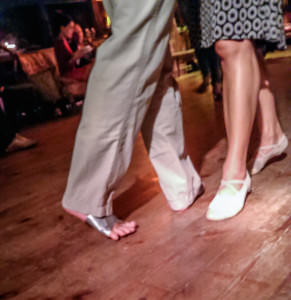
Max Power, organizer of Tanguito Potsdam, explains it best: “In German if we are talking about history and accuracy, we would not use the word ‘authentic’. We would use the word ‘original’ in German. We might say that something is “good, but this is not the original way.” We wouldn’t use the word ‘authentic’ in that sense. For me authenticity is really important, but it’s authenticity forme, my logic, what I am doing. What I am teaching about tango makes sense. So that a student afterwards feels comfortable, feels logical, that they can use it, that they can understand it, practice it, get better. It’s not like it has to be Argentine or because an Argentine is doing it that is original and authentic. This is not the meaning of authenticity for me. For me “Authentizität” is connected to the adjective “authentisch sein”. I would translate it as being yourself. It’s connected to a person. If a person is trying to live a role where he is not his or herself, then it’s not authentic. Or if a person is trying to teach something how it has to be, but he is not dancing that way Teaching based on an image of what itshould be, but not doing it is not authentic for me. …. I think we in Berlin have our own style, our own tango. So I don’t have to have been in Buenos Aires to dare teaching it, because I learned from lots of teachers here in Berlin, and not only from Berlin, but from anywhere in the world. And people want to learn something from me. They are asking me. This is the main reason why I dare to teach.”
Berlin’s audacity extends further than sex clubs. Judith Preuss questions deep shibboleths. “There is now a wish of being more feminine, being women. When they started Café Dominguez, I felt all these young people who come with their partner and behave like old people. They come, change their dress and wait for the cabeceo. I found it a little ridiculous. The imagination people have is that they want to dance nice. For me tango is nothing where “nice dancing” is a good aim. it’s not about being beautiful, dancing beautifully. I can observe that this wish of dancing beautifully is in many pupils. There are a lot of unconscious ideas about being feminine. Tango is expressing yourself and you can express a lot of different emotions. For example, there’s a school here called “Tango Tanzen Macht Schön” (Tango Dancing Makes you Beautiful). This is commercially wonderful. But the name, for me it doesn’t make sense for me with tango. Tango is not about being beautiful! It’s about expressing yourself! I dance with a lot of different emotions. Sometimes i’m really angry and I think I dance well. So I don’t think of being beautiful when I dance tango.”
Berlin Tango dancers here are not doing someone else’s thing, they’re doing their own thing, and they encourage a proliferation of opportunities to make tango.
One of the most significant contemporary opportunities is being developed by Sven and Pedram of Tango Kollektiv. They are developing a model for popularizing tango, and due to the importance of this project to dancers and organizers around the world.
